What type of writer are you? Are you a pantser who likes to write without much of a plan or a plotter who works mostly from an outline? Maybe you're some combination of both. Let's look at the three types of writers.
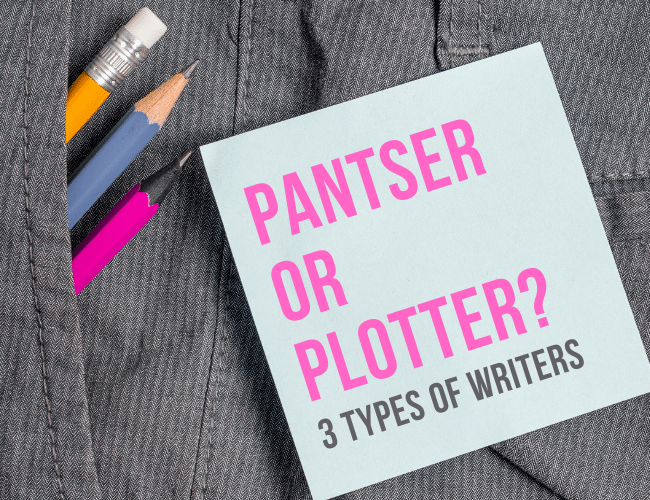
There are all types of writers, but most writers fall into one of the three categories: pantser, plotter, or planster (a combination of the two).
While there's no (necessarily) right or wrong way to approaching plot structure, writers who fall into their certain type do so with pride.
Today, let's talk about the three types of writers—and learn if you're the kind of writer who writes by the seat of your pants, or someone who takes a general idea and writes pages of background and structure before moving forward.
What is a Pantser?
A pantser is someone who “flies by the seat of their pants,” meaning they don’t plan out anything in their story, or plan very little.
Freedom is an important value for pantsers. They don't need or want a detailed scene-by-scene outline. In fact, their writing style—for a first draft or senior book—is partly about discovering the story as they write it.
They like to get lost in their story. They like to let the main character and their imagination lead them to a surprising finished product.
What is a Plotter?
Simply put, a plotter is someone who plans out their novel before they write it. There are various levels of plotters. Regardless, outlining their novel before writing is extremely important to these writers.
In fact, it's essential to the writing process. It's what keeps their story structure in tact, and it is also crucial to have if they want to finish their manuscript.
Plotters value knowing what's going to happen in their story before writing it. They want clarity. A plan gives them energy and intention, and it saves them a lot of time when they do write their book (and also when they revise!).
Got it! But what is a PLANTSER?
Some people, like me, call themselves “plantsers,” which means they’re do a little of both. In reality, most people are plantsers, but some tend to lean heavily to one side or the other.
A plantser could be someone who—before writing—writes a synopsis and comes up with important details that drive their story ideas. Or they could be the kind of writer that enjoys planning out their subplots and character sketches and character arcs, but during the writing of the novel, goes rogue for some chunks of the story. They like a taste of writing life on the seat of their pants—but not all of it.
Personally, I think a great plantsing strategy is to look at story arc and outline the big moments in a book. In other words, the elements of plot for the major parts of a book: the beginning, the middle (which has two parts separated by the midpoint), and the end.
You can learn more about the elements of plot in the post, but as a quick recap, here they are:
- Exposition
- Inciting Incident
- Rising Action (which peaks with a Turning Point Progressive Complication)
- Dilemma
- Climax
- Denouement
No matter what type of writing method or writing life you prefer, there are pros and cons to each one.
Let’s take a look.
PANTSER Pros and Cons
Pros: Pantsers have the freedom to take their novel in any direction they want. They love the blank page, and thrive on the thrill of the ideas that come as they type. They also have flexibility. They’re not stuck following an outline, so if they don’t like a character, they can simply kill him. If they don’t like the way their plot is going, they can change it.
Cons: However, having no plan, or very little plan, makes it easier to get stuck. And if they get stuck, they have to come up with a way to dig themselves out of writer’s block, rather than following an outline that leads them in the right direction. When this happens, Pantsers often abandon old projects for new ones, leaving multiple unfinished novels in their wake.
Why?
The pantsing approach, writing with no direction, likely means there will be lots of rewriting, since these types of writers usually take a vague idea and run with it. While fun in the moment, this can lead to lots of plot holes, which means rewriting (a lot of it) is almost guaranteed.
Pantsers will have to eventually look at plot structure and outlines. They just do it after the first draft is done. And that can be overwhelming.
In novel writing, too much editing can lead to burnout and manuscript abandonment. And rewriting, although inevitable for every type of writer, is especially steep for a pantser.
PLOTTER Pros and Cons
Pros: Plotters, having planned out their novel ahead of time, know what’s going to happen before they write it. This makes it easier to bust writer’s block. It’s harder to get stuck when you know what’s going to happen next. Plotters also tend to get their novels written faster, or at least more smoothly.
Cons: Plotters are confined to their plans, meaning if they do get stuck or want to change something, they often have to redo their whole outline. And I can tell you from experience, redoing an entire outline is not fun.
If you're a plotter, then you're in luck. We have several great resources for you. Learn more about plotting your best story here:
- A Writer's Cheatsheet to Plot and Structure
- What Is Plot? The 5 Elements of Plot and How to Use Them
- Crisis: Story Grid's Central Plot Point
- Freytag's Pyramid: Definition, Examples, and How to Use This Dramatic Structure In Your Writing
Writers Take Many Forms
All writers tend to fall into one of these types: pantser, plotter, or planster. There are advantages and disadvantages to all types of writing styles—and knowing the type of writer you are will prepare you for what usually holds you back.
Which means self-awareness of you writing preference will make you a better writer.
Because we all become a better writer when we finish (and revise) our books.
What about you? Do you consider yourself a Plotter or a Pantser? Or are you a little of both? Let us know in the comments.
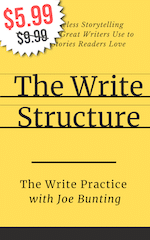 Need more plot help that's friendly to plotters AND pantsers? After you work on practicing your plotting and pantsing in the exercise section below, check out my new book The Write Structure which helps writers make their plot better and write books readers love. Low price for a limited time!
Need more plot help that's friendly to plotters AND pantsers? After you work on practicing your plotting and pantsing in the exercise section below, check out my new book The Write Structure which helps writers make their plot better and write books readers love. Low price for a limited time!
PRACTICE
Whatever type of writer you think you are—plotter or pantser—become the opposite for a little while.
If you’re a pantser, plot out your next scene or chapter for your novel.
If you’re a plotter, abandon your outline and write freely.
Write for fifteen minutes and, if you’d like, post your practice in the Pro Practice Workshop here. Don't forget to give feedback to a few other writers while you're there. Have fun!
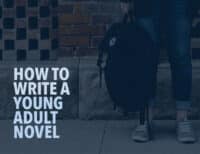
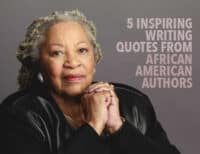

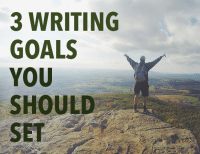



I am definitely not a plotter by nature when it comes to writing. I love the way writing can grow and twist organically, and prefer that to predefining its course.
Last week I completed the manuscript that I have been working on for the past two years and laid it to one side to mature before getting into the editing.
Time to start something new.
A year ago whilst walking the streets of Cartagena, Colombia, there was an incident that fired an idea for my next work. As I continued to walk, I plotted the whole book out in my head, from initiation to conclusion. I wrote it down later that day, and have been waiting eagerly to start it ever since. Two days ago I read the synopsis and wrote a brief prologue.
Today, as I started to frame up chapter one, a sullen detective named Sal Tejada walked into the middle of the scene and shot my plan to hell.
Funny thing is, I feel much better about it. I guess we are what we are.
Ah, yes. Writing can be tricky that way. You can set out to write a serious contemporary and end up with a wacky, MG fantasy adventure. Guess that’s what happens when our imagination gets to be in control. 😉
I’m still trying to find the for me most comfortable spot on the spectrum. My first WIP was written in 100% pantser mode—and let me assure you it was an exhilirating ride, just letting the story go wherever it wanted to go and discovering that characters can come to live and develop a mind and an attitude (or perhaps more accurately: attitude problem) of their own, wreaking havoc with your manuscript. Highly recommended for new authors, if only just for the fun of it. 🙂
My second WIP is 80% pantser and 20% plotter (numbers determined by the scientific approach known as ‘gut feeling’).
For future manuscripts I’ll just move the slider even further, perhaps even all the way to 100% planner, and then determine which setting works best for me.
I wrote my 2011 NaNoWriMo novel in 100% Pantser mode. Boy, was that an insane story!
Messing around with different techniques is the best way to find what works for you. 🙂 I hope you find something you like!
Coming from a software development background, I tried to apply principles of “agile project management” to writing my first book, and it worked out pretty well. I had a beginning and ending in mind, and plotted via more abstract ideas like character development and relationship dynamics. This gave me a general idea of where the story needed to be going as well as guidance to where scenes belonged as I thought of them.
The result was very successful – my first manuscript required very little structural rework, and there were no extraneous chapters or scenes. I don’t think I could have written a story this tight from the start without any planning, and the flexibility of the process meant that I was free to take it into different directions because I didn’t tie the structure to many concrete elements.
I’ve documented this on my writer’s group’s website if you’re interested in knowing more. http://gfwwriters.com/2014/01/27/agile-outlining/
That’s fantastic that you found something that works for you! 🙂
I’m always blown away by your mature and insightful posts! Really enjoyed this, especially your use of the word planster! That is definitely me too 🙂
-Dana
Aww, thank you so much! 🙂
I walked down the uneven sidewalk as the rain beat down on me. Few people were out in my small town a few shop’s were open and the cozy glow from the light’s set off though the dark and cold sky. I slung my back pack onto my shoulder my hoodie protecticting me from the rain. My red hair covered my eye’s. I tiredly held me head up from a long day at school. The taunting and teasing wold make anyone break down and cry. Not me though me exscape was a razor blade down my arm.
Before you judge me let me tell you my life. My mom and dad are drunks and druggies. I’ve raised myself all my life. My family’s the outcast in this town in fact I wouldn’t even have a house if I didn’t work.
So yeah I cut myself and I’ve thought of suicide but that’s society for you. The kid’s at school like to bully me because I wear weird clothes and I’m shy and I don’t stand up for myself. Today was the same as any other day. I got punch in the mouth causing me to have a busted lip and of course nobody saw it so I was sent down to the principal office. Thunder roared making me run. I flew over the sidewalk away from the bullies and my mom and dad’s abuse. Of course all good thing’s have to come to a end.
I reached the front door and opened it. The blaring TV rang though the house. My mom and dad were passed out on the couch bottle’s and pill’s were scattered around the table. I walked up stair’s going though the mail. I threw my back pack on the floor and slump down on my desk chair.
I opened a letter that had my name written on it. I stared in fear at what it read just three simple word’s. It is time.
Ooh, this was chilling. There were a few spelling and grammatical errors here and there, but otherwise I really liked it. 🙂 Good job!
I’m naturally a pantser (wrote my first novel that way) but for the second time around I’m going with a post-it note outline.
Ooh, I love post-it outlines! 🙂 My favorite part of outlining is writing down scenes, then rearranging them until I’m satisfied.
Hello Everyone.
I am a plantser. I start out by writing by the seat of my pants. I like to let the story take me, and see where it goes. But then, once I see where the story is going, I like to make an outline. That doesn’t mean I need to completely follow it, but it is nice to see what might happen in the story.
Great article. Very interesting. 🙂
I like this idea! Might try it myself.
Neat! Have fun 🙂
Huh, I’ve never thought of approaching a story like that. Usually I start with a vague outline and then go from there. Thanks for sharing! 🙂
It is interesting that you haven’t heard of that yet. I feel special lol. I guess we have to go with whatever works. Thanks 🙂
I am definitely a pantser, and it’s not good! My hard drive is littered with partially-finished novels because I always end up getting stuck in the middle and can’t figure out what to do, so I get frustrated and abandon them. I made a resolution this year to finish all my unfinished manuscripts before starting something new… except I just started working on a new science fiction piece, so I obviously haven’t kept that resolution!
I have that same problem right now. I have many unfinished works and ideas. At first I was excited by the many ideas, but now I am sad to see these stories waiting for me. It’s hard to decide which one to do again.
I find that it’s best to go with whatever you’re most inspired to write (unless you’re on a deadline, of course). If you’re motivated when you write, rather than annoyed or feeling like you “have” to write it, you’ll produce better work. That being said, there is something wonderful about that sense of accomplishment when you finish a project! 🙂
I am a disgruntled Plantser. I plan enough to get myself started; I get my characters formed and I know how the story ends, everything in-between is done as a pantser.
I believe I’m going to follow that same path for the novel I’m working on right now, but I may also have a short list of bullets that state some key events that happen between the beginning and end, but I believe that will be the easiest part.
I know a lot of people who do that. Normally I know how the story begins and ends, but everything in between is fair game. 🙂
Interesting, you have me thinking, I think I am a plotter and a pantser. Allow me to explain- I plan but if it’s not working i put my panster hat on 🙂
That’s a good way to approach it. 😉
I’m a pantser. The one time I tried to write an outline, the story withered, and died on me. But, I do have multiple novels in various stages of completion. I just have to fight passed the thing that is even more dreaded than writer’s block: Procrastination.
Oh, I know that evil P word…
Ah, yes. Procrastination: the death of all productivity!
I believe I am definitely a plantser. I tried the whole plantser thing, and while that has worked for me for short stories, writing a novel is totally different- at least for the novel I’m working on right now. It’s rather complicated to plan since the current story has a past which gives the present events purpose, but this past is revealed slowly throughout the book since both the two main protagonists and the readers assume they already know what the past is. (Spoiler: they’re wrong!) When I began writing this novel I had a vague concept and a desire for a story. So, I pantsed it and got about 8 and a half chapters as a result- but my characters and story were not the ones I knew. They weren’t part of the story I wanted to tell. It would take me a while to realize that I needed to sit down and figure out some things before I attempted writing the beginning of this story for the fourth time. Who were my characters? Where was the story heading? What was I wanting to convey to my readers? How would I convey it to them?
Most importantly: Why does this story deserve to be told? What is its purpose?
I don’t have all the answers yet, but now 3 years after that vague concept popped into my head in the seventh grade, I am answering those questions. I finally feel like this story could take off and fly, but I need to learn how to flap first- which is a metaphorical way of saying: I need to get more organized with my time and my thinking and realize this is hard work. True, it’s work that I love, but that story won’t magically poof on my computer screen one day. I am now a sophomore in Highschool and I am finally starting to learn- only after I had admitted that there was MUCH to learn about. This blog in many ways helped me realize that, so thank you. (Thus, I conclude this rant-like post, which I had thought would be considerably shorter. Whoops.)
A lot of the time, just messing around with different types of planning (or not planning) is the best way to discover what works best for you. That’s great that you’re figuring things out already! Thanks for commenting! 🙂
I am a plantser, I plan out the beginning and the end, and then write like a pantser through it
Hey, that’s pretty much what I do! 🙂
Great post! I’m a plotter for the most part. I begin with a premise and create my characters and their world. Once that’s established, the plot is born. I create an outline akin to a screen writer’s treatment. Typically if there are inconsistencies or holes in the story, they are recognized and eliminated before I get too deep into the error. The best advice I can give for saving time is to write a first draft with side bar comments to yourself, and then begin your edits once the draft is complete. You will save time and avoid throwing away tons of pages.
For more tips about writing follow me on twitter @LSRedding1
I envy you. I don’t have the patience to create an outline that detailed. Often my notes read something like, “Ronald falls off horse” or “Murderer discovered.” Thanks for sharing! 🙂
My pleasure! Great article. My writing group was just discussing the difference between plotters and pantsers around the same time you posted this.
I’m a plotter, but I don’t hesitate to deviate from my outline, so long as the change doesn’t change the story so much that the outline is useless. But I find I can change sub-plots and character arcs without making my outline completely useless, since it has all the major events planned out which often stay the same.
I tried to be a pantser at first but I kept getting stuck with writer’s block and I’d leave my project sitting for months. Once I planned out the novel, though, I got the rough draft written in a few months. And I’m not going back!
I love it when I can change something about my outline without setting off a domino effect that makes me have to redo the whole thing. 🙂 It’s fantastic when that works out!
I’m definitely a plantser, with a planner bias. I do a pretty intense planning session before writing in regards to the overall shape of the novel and (even more so) the characters. But I also let it go where it wants once I get started and frequently have to go back and fill in the holes — although, admittedly, I do plot out how I fill in those gaps.
I think it’s great advice for hardcore plotters to try pantsing (heh) and vice versa.
Huh, I’d never thought of plotting out my characters before. Good idea! 🙂
I think so, too. 😉
Definitely both. When I started my novel (that I’m still working on), I didn’t plan one thing. Half way through, I realized that it wasn’t going to work, and made an outline, which forced me to restart the whole thing! I pretty much follow the whole outline, but I’ll throw in a few twists and turns on a whim. I’m a proud plantser 🙂
And you should be! It took me a long time to figure out which one I was. That’s great that you found something that works for you. 🙂
I finished my first novel (yay) as a pantser. When I tried to rough out an outline, I found myself using it as an excuse to not start writing. I’m in the midst of editing and became frustrated one day when ideas for my next project wouldn’t leave me alone. In order to give my full attention to my edits, I decided to take a moment to start typing up the ideas and it came out as a pseudo-synopsis. I haven’t started writing it yet, but so far I like the flow of ideas this generates, as opposed to a traditional outline. I guess I’m a converted planster! :-)!
Congratulations! 🙂 It’s always exciting to finish a project. Isn’t it great when ideas come to you without you even having to do anything?
I definitely think I’m a pantser. Most of the time I have no idea what’s fixing to happen and I just hope my character can figure it out. My brother will finish his exams and always say “it’s in God’s hands now,” and that’s so me when I’m writing. If you ask me what’s going to happen I can only tell you I have no clue, it’s in God’s hands now, meaning the story has it’s own life, I just hold the pen and the Moleskine! However, when I get stuck I tend to outline the story, starting with what I know and what I want to happen. Maybe I’m a plantser!
http://teathespiritandapen.blogspot.com/
That’s fantastic! 🙂 There’s something so freeing about just writing and not knowing what’s going to happen next. It’s like magic.
I am a pantster, unfortunately, I just write. I want to plot. I try to. But I have been feeling the slow makings of a long term book start to shuffle through my mind. I think that’s what’s happening.
Don’t worry, plotting isn’t for everyone. 🙂 And sometimes it just takes time to adjust to a method of writing. I wrote for years without an outline, and only recently have I discovered that I like mapping out my books!
I’m a pantser, and I cringe every time I see a pros and cons of being a pantser. Pros and cons assumes that you’re weighing in on the good and bad points like you might do when you buy a car and then choose. I didn’t choose to be a pantser; it simply was me. I’ve tried outlines, and even a “pantser-friendly” one, which wasn’t. They failed by Chapter 3 every single time.
Also, not every pantser has a trail of unfinished projects.
You know, that’s very true. I hadn’t thought of it that way. But I definitely didn’t intend to portray being one or the other as “bad.” I’m sorry if it came across that way.
I know not every Pantser has a trail of unfinished projects. I just know that a lot of them do, based on people that have said so online or otherwise. I admire those who can stick with a project for so long without getting stuck or switching to a new one!
Thanks Magic Violinist. Your topic is very interesting.
——————OoO————————-
I’m a little of both plotter and pantser. When I just have some idea to write a long story, I often plan out it before writing. This helps me easy to write each paragraph. In this case I’m a plotter. However when I have a flash idea suddenly, I write follow my thinking. And in this case, I’m a pantser.
So I think it is good to mix a little of both plotter and pantser. It’s up to situation.
–Zeus–
You’re definitely right. 🙂 I think a mix of Plotter and Pantser is good, too.
I’m a panster who is currently thinking about actually plotting something. I looked at the snowflake method and literally cringed. I think I might try and be a planster.
A lot of people start out as a Pantser or a Plotter and end up being a mix of both. I went from being a Pantser to a Plantser in just the past year!
(I’d never heard of the snowflake method, so I looked it up. All I can say is wow!)
i know!
I am a proud pantser. My first novel is going so smoothly. I have 67000 words and I am almost done. I have not hit the dreaded BLOCK yet. I am 17.
Now I realize, when I was a child, I was a pantser – I wrote a whole bunch of novels and never finished even single one of them because I was getting bored and soon I was coming with new story ideas. Now, while I am writing my third adult written novel, I start to understand and see that being a plotter is definitely better and scrivener enables. I have always used to take notices in a notebook. However, I must confess a certain thing: not matter how much you outline, at certain point of the story will get a life on its own. My advice is to be flexible and to experiment. In the movie Inception there was a line referencing on that.
I think a golden story lies somewhere in the boundaries between being plotted and being pantsed. So go plantsing!
I just wrote a blog post on the differences between the two and which I find myself being as a writer. I linked back here to your post so people know all the pros and cons as well! Excellent post! http://blog.jhwinter.com/writing-plotter-vs-pantser/
I’m a pantser with over 70 unfinished works. Normally I like to see where a novel is shaping before I commit to it deeper and the only way to do that is write for a length. The novel I am on the 2nd draft of at the moment was one that I had previously parked. Thanks for this definition.
I once tried plotting and it was terrible. I get that some people have to plot, and respect that, but I feel more motivated and fun when the plot leads itself. I just write what a bunch of fictional characters in a fictional world do, not decide it, and for me, writing is more enjoyable that way.
Thanks for the clear explanation of plotters vs. pansters. I’ve mentioned this to a few people and they have no idea what I’m talking about. Now I know where to send them! I linked to this post from my blog describing how Pixar embraces failure as part of the storytelling process: http://mikesundy.blogspot.com/2016/05/the-most-valuable-thing-i-learned-at.html
I am none. Not even a combination. None of the three options feel right. I feel like my potential pantsterness cancels out my potential plotterness but they sorta work together in a way.
I start a story on a scene/ a genre I want to try/a name (weird I know)/a smell/a sound/a feeling or sensation that I’ve felt/an undeveloped idea in another book/an original idea from me/a thought/ even a food combination and see how that would work by researching all the genres out there, reading alotta books all the while writing the story and changing it along the way but I don’t go back to change my outline. I write/research/change ideas as I go.
If I get stuck, I stop writing, make a note of how I had envisioned a future part of the story and wait till I get motivation/another idea to finish up the story then replot
Because of this I don’t have summaries for my stories. Just one sentence descriptions (I write online)
It’s a bit of a bother because I don’t have an idea of where my story is going but I plot it. I plot several different outcomes even before I start
I’m a little bit of both, I tend to have my ideas planned vaguely out but complete and my endgame, but when so write I can just abandon my plan for another, or just make tweaks to it. I never have the issue of actually having to redo everything as my outline is like a fluid roadmap with scenes bare enough for me to remember and take it down without having to look back but allows me to pants some twists which I only see halfway through the novel or maybe while I’m writing the chapter itself.
One of the main aspects of writing productivity has to do with knowing—at least to some degree—what you’re going to write. In Rachel Aaron’s popular blog post about how she jumped from writing 2K to 10K a day (http://thisblogisaploy.blogspot.com/2011/06/how-i-went-from-writing-2000-words-day.html) this is one of the three main factors that skyrocketed her productivity. And it takes no more than 5 minutes of pre-planning time.
Personally, I usually like to begin by thinking about what I want to write. Lately, I’ve limited myself to no more than an hour of brainstorming before I make myself jump in and get the ball rolling. That’s plenty of time to get an idea of where you’re going. Keeping a strict policy of cutting it off at an hour is also a great procrastination fighter.
I’m not one to have huge outlines before I even begin to write. I subscribe to the ideas of Dean Wesley Smith, Stephen King, and Stuart Horwitz when it comes to plotting/pantsing. They’re definitely worth checking out, especially if you’re stuck feeling like you have to plot before you write like all the “professionals” say.
I have to begin by pantsing. The character comes alive as I write them, then I roughly outline where I’ll send her and with whom. Writing an outline before having a fully voiced character is too difficult for me because I can’t anticipate how she’ll react yet.